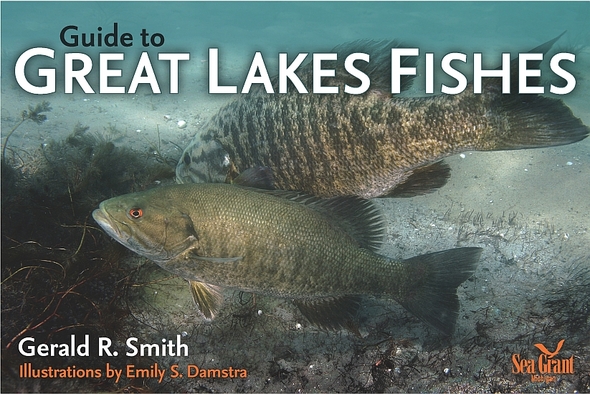Ex-Michigan professor's new book can assist fishermen and fans of the Great Lakes

Gerald Smith's new book, "A Guide to Great Lakes Fishes," offers information on every species of fish found in the Great Lakes. (Photo courtesy of University of Michigan Press)
By his own estimation, Gerald Smith, a former professor at the University of Michigan, has been obsessed with fish for “too long.”
In his new book, “A Guide to Great Lakes Fishes,” which is available in book stores, he hopes some of that enthusiasm will rub off on residents of Michigan and other Great Lakes states, who sometimes take advantage of the resources that available in lakes Michigan, Superior, Ontario, Erie and Huron, which represent 20 percent of the planet’s fresh water supply.
The book is specifically aimed at fisherman, although Smith himself hasn’t fished in a long time. He even pushed the publisher to print the book on waterproof paper, in hopes that it will help anglers identify the fish they’re catching.

Gerald Smith
“I wanted people to be able to identify the fish they see and catch and realize just how diverse these lakes really are,” Smith said. “If people can see that and get excited about all the fish, they’ll be able to appreciate what an incredible resource the lakes are.
“And they’ll be more aware of the struggles the Great Lakes are facing: pollution, introduced species and everything else.”
Listening to Smith talk about fish is intoxicating, in a way. His enthusiasm for the subject he’s been studying since his undergrad days at the University of Utah in 1958 spills into every sentence — about everything from migration patterns to submarine trips and commercial distribution.
For example, he got really excited when talking about whitefish, which have been a reliable source of food for humans since the days of the Native Americans — almost 4,000 years.
“Native Americans have license to fish and sell these whitefish, and they ship them down here from the U.P. fresh, and they’re delicious,” Smith said. “But they cost a little extra.
“But Canadians catch the same fish, fast-freeze them, ship them to Asia where they’re gutted and fast-froze again, shipped back to Canada and then distributed. And it’s a little cheaper that way.”
Smith says such an education could be important in the current times, as the scare about the rise in the Asian Carp population comes to a head — although he, as a scholar of fish for more than 50 years, stands on the opposite side of the debate than you may expect.
With 18 different species of predators, the Great Lakes have a more diverse group of meat-eaters than any other water ecosystem on the planet, according to Smith.
“Some of them will really enjoy having planktovores with a high reproductive rate around,” he said with a smile. He says the sporting fish in the lakes, which represent a multi-billon-dollar-a-year industry could thrive on them.
Although he warns that no one knows for sure what might happen if the Asian Carp population explodes.
“You never know how a new species will turn out,” Smith said. “They could go crazy and take over.”
Andy Reid covers sports for AnnArbor.com. He can be reached at andrewreid@annarbor.com.


Comments
NetBuddy
Fri, May 14, 2010 : 1:15 a.m.
Good point about the sport fish having all the carp they can eat. The carp have no teeth and are defenseless. Even a quick walleye could grab a chunk of a large carp without being in danger. Besides, the average size of the carp is no bigger than an adult salmon. That carp can reproduce in the Great Lakes is pretty much a known myth. Still if they could, it would probably turn Lake Michigan into the premier salmon fishery in the nation.